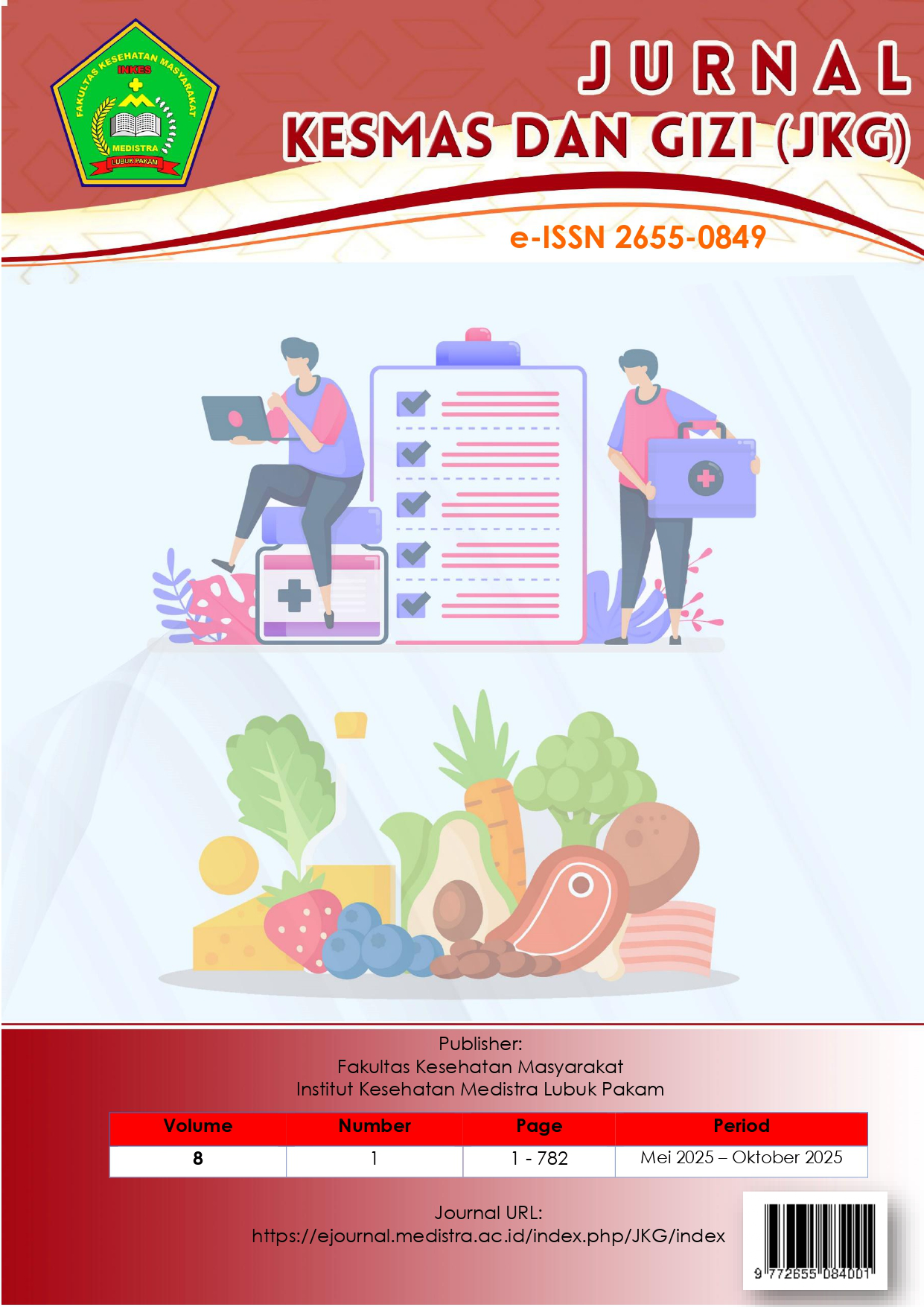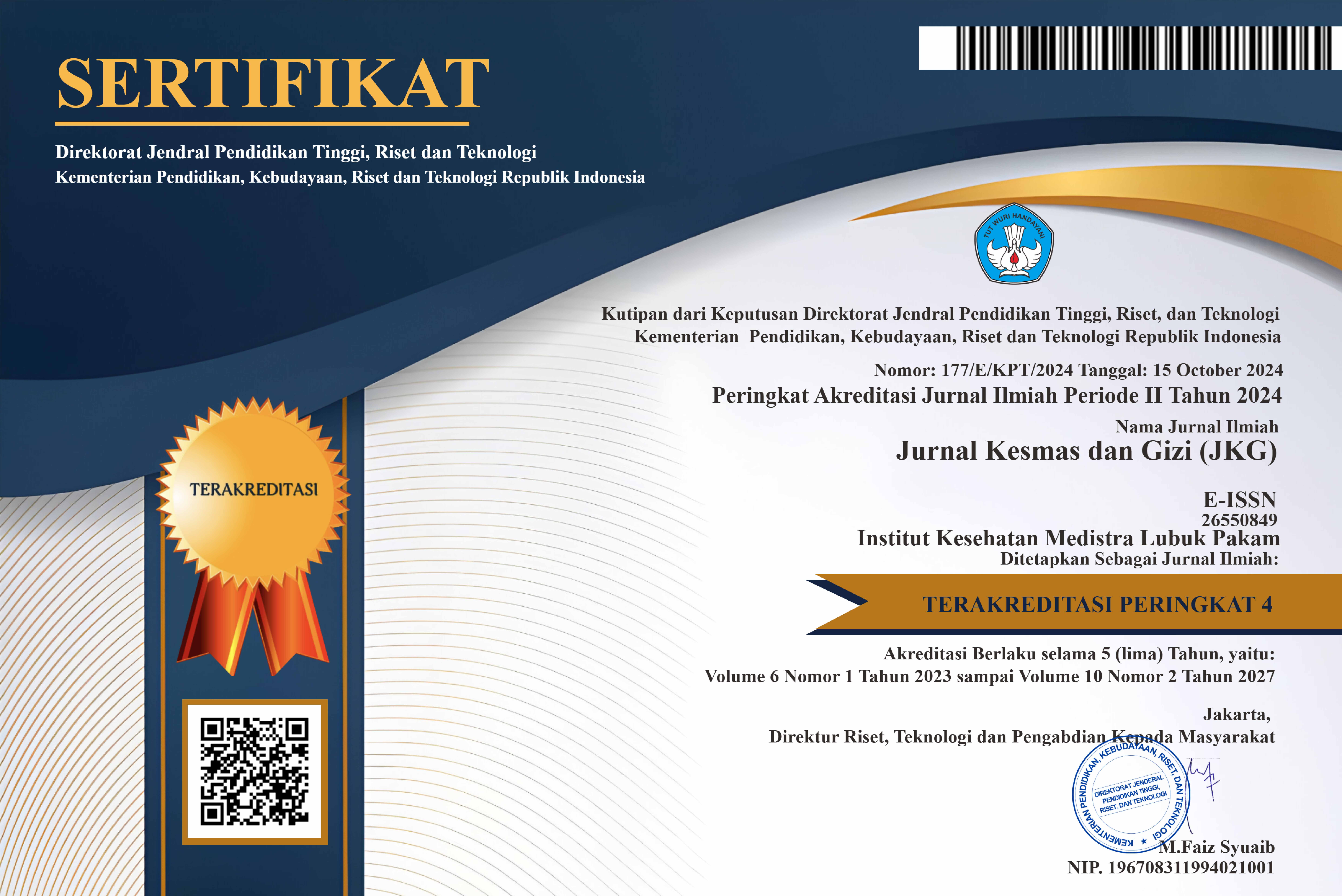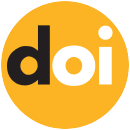The Relationship Between Knowledge About Balanced Nutrition Guidelines And The Amount Of Pocket Money With Overnutritional Status Of Adolescents
DOI:
https://doi.org/10.35451/zrk9pr49Keywords:
Balanced Nutrition Guidelines, Overweight Nutritional Status, Nutritional Knowledge, Pocket MoneyAbstract
The nutritional status of adolescents is currently a major public health concern, particularly due to the increase in cases of overweight and obesity, which increase the risk of non-communicable diseases (NCDs) such as diabetes mellitus, hypertension, and heart disease. The main factors influencing nutritional status are a balanced diet and adequate physical activity. However, other factors such as knowledge of balanced nutrition guidelines and pocket money management also play an important role. Nutrition knowledge is expected to influence attitudes and healthy food choices, while higher pocket money amounts may increase the tendency to purchase high-calorie, low-nutrient foods, thereby contributing to the risk of overweight. This study aims to analyze the relationship between knowledge of balanced nutrition guidelines and pocket money with nutritional status among high school students at SMA IT Nur Hidayah Sukoharjo. A cross-sectional observational study design was used with a population of all 11th grade students (N=283). The study sample consisted of 72 students, selected through simple random sampling. Data analysis used the Pearson product moment statistical test for nutrition knowledge and the Spearman rank test for pocket money,following the Kolmogorov-Smirnov normality test. The results showed no significant relationship between knowledge of balanced nutrition guidelines and overweight status among adolescents (p=0.676). However, there was a significant relationship between the amount of pocket money and overweight status among adolescents (p=0.043). This indicates that nutrition knowledge is not a direct factor influencing overweight status, while a higher amount of pocket money is correlated with the risk of overweight due to excessive consumption patterns. Teenagers are advised to increase their knowledge and application of balanced nutrition in their daily lives and to use their pocket money wisely when buying food and drinks.
Downloads
References
[1] M. B. Arisman, Gizi Dalam Daur Kehidupan, 2nd ed. Jakarta: EGC, 2010.
[2] Kemenkes RI, “Gizi saat Remaja Tentukan Kualitas Keturunan,” 2020. [Online]. Available: https://kemkes.go.id/id/gizi-saat-remaja-tentukan-kualitas-keturunan
[3] Riset Kesehatan Dasar, Badan Penelitian dan Pengembangan Kesehatan Kementerian RI tahun 2018. 2018.
[4] Badan kebijakan Pembangunan Kesehatan, Survei Kesehatan Indonesia (SKI). 2023.
[5] Merita, Aisah, and S. Aulia, “Status Gizi Dan Aktivitas Fisik Dengan Status Hidrasi Pada Remaja Di Sma Negeri 5 Kota Jambi,” J. Ilmu Kesehat. Masy., vol. 9, no. 3, pp. 207–215, 2018, doi: 10.26553/jikm.v9i3.313.
[6] E. Van Den Eynde, R. Camfferman, L. R. Putten, C. M. Renders, J. C. Seidell, and J. Halberstadt, “Changes in the Health-Related Quality of Life and Weight Status of Children with Overweight or Obesity Aged 7 to 13 Years after Participating in a 10-Week Lifestyle Intervention,” Child. Obes., vol. 16, no. 6, pp. 412–420, 2020, doi: 10.1089/chi.2020.0070.
[7] World Health Organization, “Malnutrition,” 2020. [Online]. Available: https://www.who.int/news-room/fact-sheets/detail/malnutrition.
[8] Agustina and P. Permatasari, “Hubungan Pengetahuan dan Penerapan Pesan Gizi Seimbang pada Remaja dalam Pencegahan Anemia Gizi Besi Relationship Knowledge and Implementation of Balanced Nutrition Messages in Adolescent for Prevention Iron Nutrition Anemia,” J. Ilm. Kesehat. Masy., vol. 11, no. 11, pp. 1–9, 2019.
[9] Permenkes RI, “Peraturan Menteri Kesehatan Republik Indonesia Nomor 41 Tahun 2014 tentang Pedoman Gizi Seimbang,” 41, 2014.
[10] S. J. Selaindoong, M. D. Amisi, and A. F. C. Kalesaran, “Gambaran Pengetahuan Gizi Mahasiswa Semester Iv Fakultas Kesehatan Masyarakat Universitas Sam Ratulangi Saat Pembatasan Sosial Masa Pandemi Covid-19,” J. KESMAS, vol. 9, no. 6, pp. 8–16, 2020
[11] H. Arisdanni and A. Buanasita, “Hubungan Peran Teman, Peran Orang Tua,Besaran Uang Saku dan Persepsi Terhadap Jajanan Dengan Kejadian Gizi Lebih Pada Anak Sekolah (Studi di SD Negeri Ploso 1/172 Kecamatan Tambaksari Surabaya Tahun 2017),” Amerta Nutr., vol. 2, no. 2, p. 189, 2018, doi: 10.20473/amnt.v2i2.2018.189-196.
[12] C. O. Sagala and N. Noerfitri, “Hubungan Pola Makan dan Pengetahuan Gizi Seimbang dengan Gizi Lebih Mahasiswa STIKes Mitra Keluarga,” J. Ilm. Kesehat. Masy. Media Komun. Komunitas Kesehat. Masy., vol. 13, no. 1, pp. 22–27, 2021, doi: 10.52022/jikm.v13i1.152.
[13] C. R. Medina, M. B. Urbano, A. De Jesús Espinosa, and Á. T. López, “Eating habits associated with nutrition-related knowledge among university students enrolled in academic programs related to nutrition and culinary arts in puerto rico,” Nutrients, vol. 12, no. 5, 2020, doi: 10.3390/nu12051408.
[14] P. L. P. Dewi and A. Kartini, “Hubungan Pengetahuan Gizi, Aktivitas Fisik dan Asupan Energi, Asupan Lemak dengan Kejadian Obesitas pada Remaja SMP,” J. Nutr. Coll., vol. 6, no. 3, p. 257, 2017, doi: 10.14710/jnc.v6i3.16918.
[15] R. Mufidah and R. D. Soeyono, “Pola Makan, Aktivitas Fisik, Dan Durasi Tidur Terhadap Status Gizi Mahasiswa Program Studi Gizi Unesa,” J. Gizi Unesa, vol. 01, no. 2014, pp. 60–64, 2021.
[16] World Health Organization (WHO); the United Nations Children’s Fund (UNICEF), “Progress on household drinking water, sanitation and hygiene, 2000-2020: Five years into the SDGs,” 2021. [Online]. Available: https://data.unicef.org/resources/progress-on-household-drinking-water-sanitation-and-hygiene-2000-2020/
[17] M. Burgess, M. E. Enzle, and M. Morry, “The social psychological power of photography: can the image‐freezing machine make something of nothing?,” Eur. J. Soc. Psychol., vol. 30, no. 5, pp. 613–630, Sep. 2000, doi: 10.1002/1099-0992(200009/10)30:5<613::AID-EJSP11>3.3.CO;2-J.
[18] A. R. Oktavianita and B. Wirjatmadi, “Perbedaan Besaran Uang Saku Dan Aktivitas Fisik Antara Siswi Gemuk Dan Normal Di SMA Negeri 5 Surabaya,” Amerta Nutr., vol. 4, no. 3, p. 178, 2020, doi: 10.20473/amnt.v4i3.2020.178-184.
[19] V. M. P. Velina and S. R. Nadhiroh, “Hubungan Uang Saku, Status Tempat Tinggal, Durasi Tidur, dan Aktivitas Fisik dengan Status Gizi Lebih pada Mahasiswa Universitas Airlangga,” Media Gizi Kesmas, vol. 12, no. 2, pp. 677–684, 2023, doi: 10.20473/mgk.v12i2.2023.677-684.
[20] K. Anindya Putri, “Hubungan Pengetahuan Gizi, Jumlah Uang Saku dan Kebiasaan Konsumsi Fast Food dengan Status Gizi pada Siswa SMPN 25 Surakarta.,” Universitas Muhammadiyah Surakarta, 2017.
Downloads
Published
Issue
Section
License
Copyright (c) 2025 Emilia Kurnia Dewi, Sudrajah Warajati Kisnawaty, S.Gz., M.Gz, Luluk Ria Rakhma, S.Gz., M.Gz

This work is licensed under a Creative Commons Attribution 4.0 International License.
Copyright in each article is the property of the Author.


























